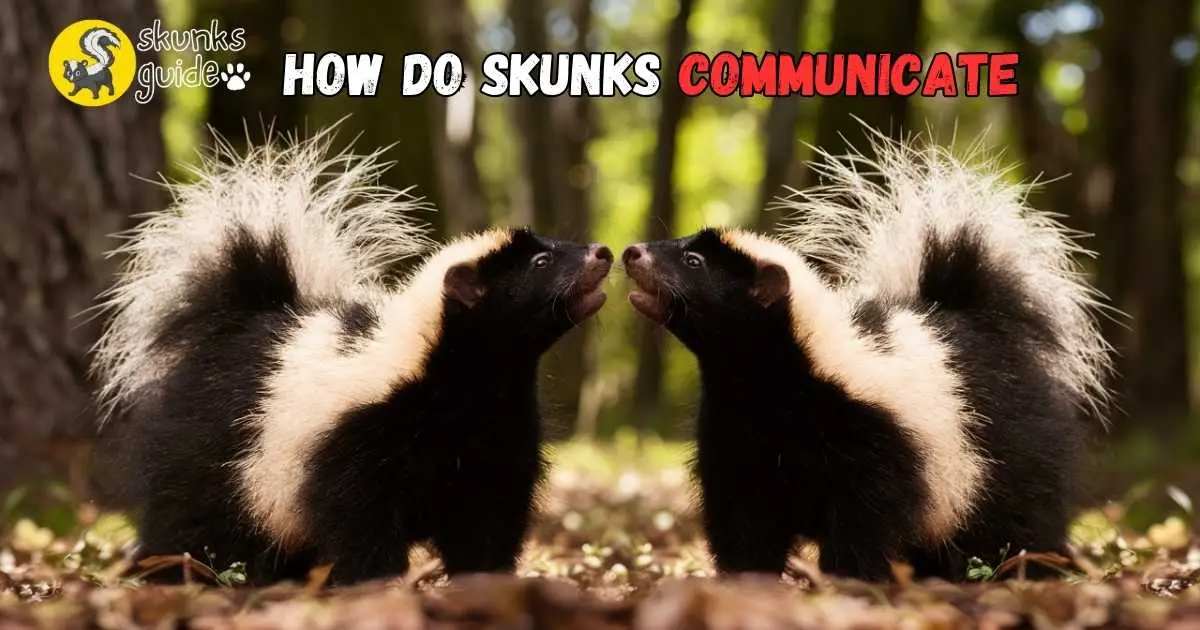How Do Skunks Communicate?
Skunks communicate by making different sounds, moving their bodies, and using scents to send signals. From hissing when they’re scared to chirping when they’re happy, skunks have their own unique way of getting their message across. Through my research as a skunk wildlife expert, I’ve learned some cool facts about their communication. Stick around to learn more about how skunks share their feelings with others!
Skunk Communication
Skunks are fascinating creatures. They communicate using various methods. Understanding their communication helps us appreciate their behavior and instincts.
The Role Of Scent
Skunks are famous for their strong scent. They use this scent for many reasons:
- Defense: A skunk sprays a foul-smelling liquid to scare off predators.
- Territory: Skunks mark their area with scent to warn others.
- Mating: Scent helps skunks find mates. Males track females using their unique smell.
This chemical communication is vital for their survival. The scent tells other skunks about danger or readiness to mate.
Visual And Auditory Signals
Skunks also use body language and sounds. These methods are important for social interaction:
- Body posture: A skunk raises its tail when it feels threatened.
- Foot stomping: This action signals caution to other skunks.
- Hissing: A skunk hisses to warn intruders.
Skunks combine these signals with scent for effective communication. They create a complex language that helps them thrive in their environment.
The Skunk’s Arsenal: Scent Glands
Skunks are famous for their unique way of communicating. Their scent glands play a crucial role in this process. These glands produce a strong-smelling spray. This spray serves as a warning and a defense mechanism. Understanding the anatomy and chemistry of skunk spray reveals why it is so effective.
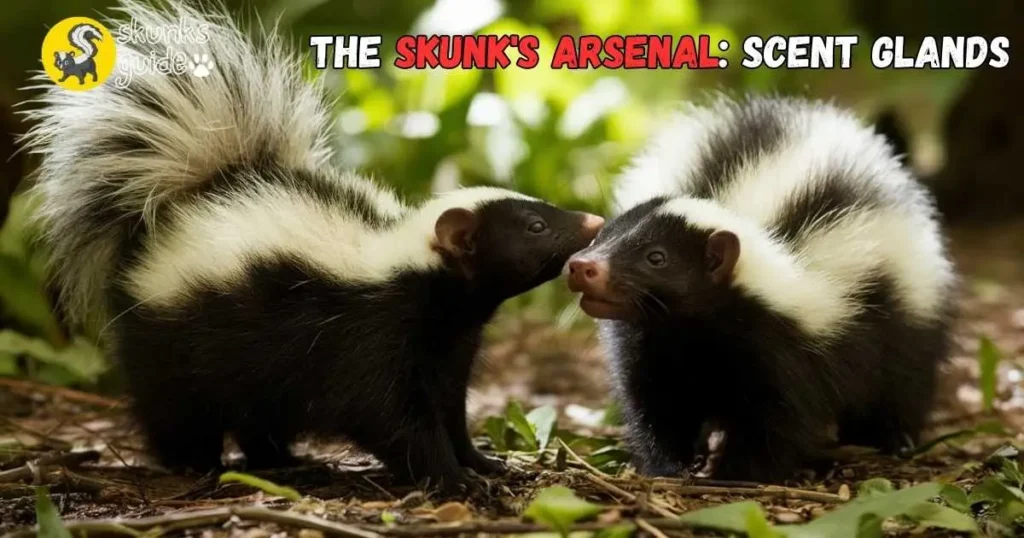
Anatomy Of Scent Glands
Skunks have two main scent glands located near their tails. These glands are called anal glands. Each gland can hold about 15 milliliters of spray. Here are some key features:
- Location: Near the base of the tail.
- Structure: Each gland has a duct that leads to the outside.
- Function: Releases a foul-smelling liquid when threatened.
Skunks can control the amount of spray they release. They can spray accurately up to 10 feet away. This precision helps them defend themselves effectively.
Spraying: A Defensive Dialogue
Skunks are famous for their strong odor. This scent is part of their communication. They use it as a defense mechanism. Understanding how skunks spray helps us appreciate their behavior.
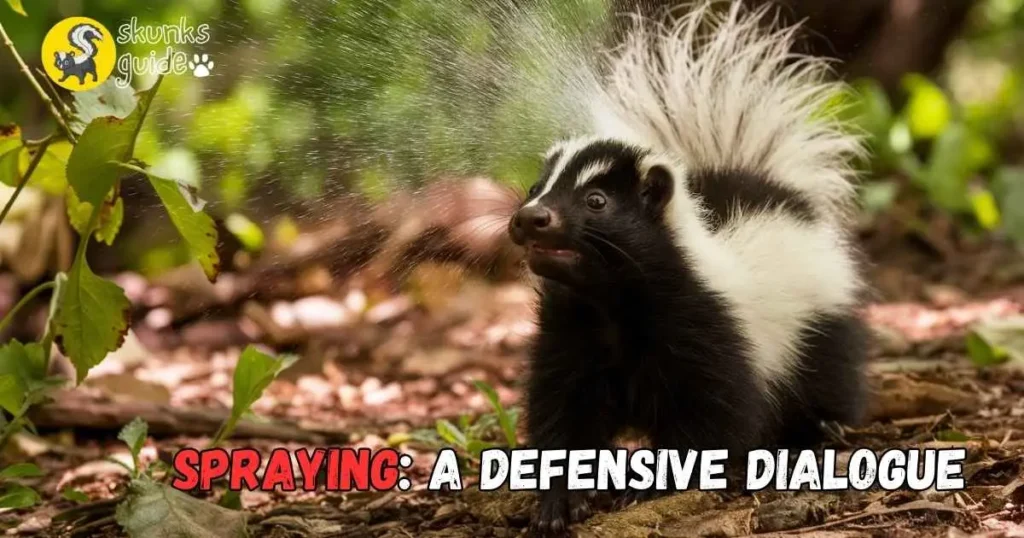
Warning Behaviors Before Spraying
Before skunks spray, they show clear warning signs. These signals help prevent conflict. Here are some common warning behaviors:
- Tail Position: A skunk raises its tail high.
- Foot Stomping: It stomps its front feet.
- Hissing Sounds: Skunks hiss loudly to warn intruders.
These actions indicate the skunk feels threatened. Observers should respect these warnings. Ignoring them can lead to a spray.
Beyond The Spray: Other Communication Methods
Skunks are famous for their powerful spray. This defense mechanism grabs attention. However, skunks use various other ways to communicate. These methods include body language and vocal sounds. Understanding these can help us appreciate skunks better.
Body Language And Posturing
Skunks express themselves through body language. Here are some key gestures:
- Tail Position: A raised tail signals confidence.
- Body Stance: Standing tall indicates readiness to defend.
- Crouching: This shows fear or submission.
Posturing is crucial in skunk communication. They often use their bodies to send messages. For example, a skunk may turn its back to show it feels threatened. This behavior warns others to keep their distance.
Vocalizations And Noises
Skunks also make sounds to communicate. They use a range of vocalizations:
| Sound Type | Meaning |
|---|---|
| Chirps: | Used for greetings or to call others. |
| Growls: | Indicates aggression or warning. |
| Whines: | Shows distress or discomfort. |
These sounds help skunks communicate their feelings. Each noise has a specific meaning. Skunks can convey fear, happiness, or anger without using their spray.
Mating Calls: The Search For A Partner
Skunks communicate in various ways during their mating season. Their calls and behaviors help them find mates. Understanding these signals sheds light on their reproductive habits.
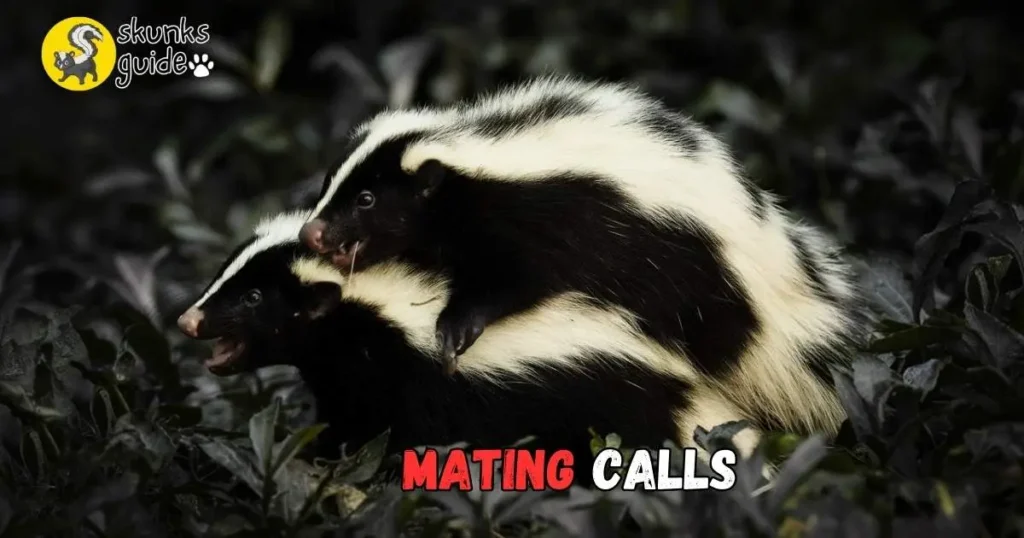
Seasonal Communication Differences
Skunks change their communication styles with the seasons. Here’s how:
| Season | Communication Style |
|---|---|
| Spring | Increased vocalizations and scents |
| Summer | Less vocal, more physical displays |
| Fall | Increased scent marking |
| Winter | Little communication, hibernation mode |
During spring, skunks are very vocal. They use loud calls to attract mates. Scent marking becomes prominent as they search for partners.
Courtship Behaviors
Courtship involves several interesting behaviors:
- Vocalizations: Males often make low grunts or hisses.
- Body Language: Skunks exhibit playful movements.
- Scent Marking: Males release strong scents to attract females.
- Chasing: Males chase females in a playful manner.
These behaviors help skunks establish a bond. The males compete for attention. Females choose the most appealing partners.
Mother And Kits: The Family Dynamic
Skunks havfe a unique family structure. The mother skunk plays a vital role in raising her kits. She teaches them essential survival skills. Communication is key in their development. Understanding how they communicate helps us appreciate their bond.
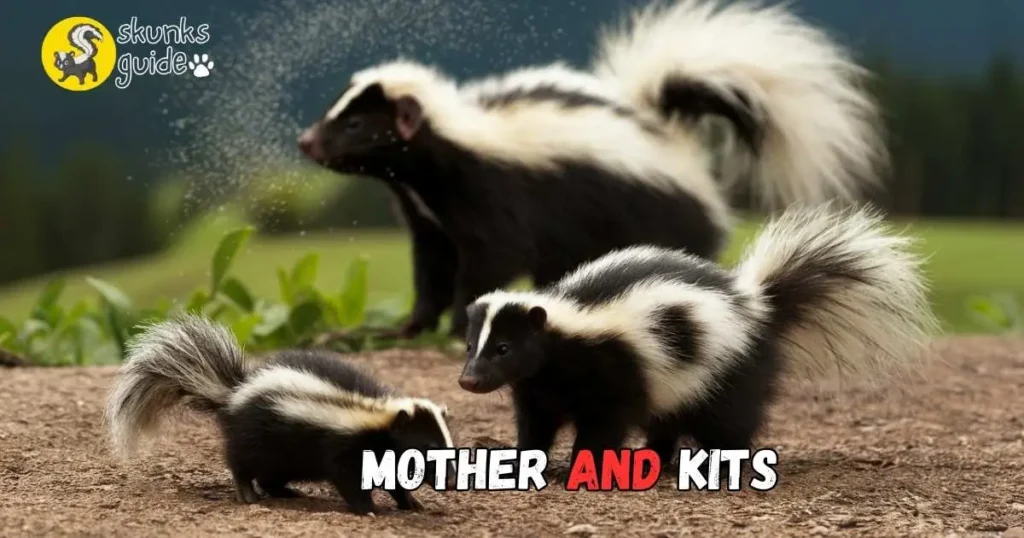
Teaching The Young To Communicate
Mother skunks start teaching their kits early. Kits learn through observation and imitation. Here are some ways she teaches them:
- Vocalizations: Mothers use different sounds to convey messages.
- Body Language: Gestures signal comfort or warning.
- Playful Interactions: Kits learn through fun activities.
These lessons are crucial for their future. Kits that learn to communicate well have better survival rates.
Bonding Through Scent And Sound
Scent plays a significant role in skunk communication. Mother skunks use scent marking to establish territory. This helps kits recognize safe areas. Sounds also strengthen their bond.
| Communication Method | Purpose |
|---|---|
| Vocalizations | To warn or call the kits |
| Scent Marking | To show territory and safety |
| Physical Touch | To comfort and bond with kits |
Through these methods, mother skunks create strong ties with their young. Effective communication helps kits grow into healthy adults.
Skunks As Social Creatures
Skunks are often seen as solitary animals. Yet, they display intriguing social behaviors. They form communities and interact in various ways. Understanding their communication helps us appreciate their social structure.
Hierarchy And Social Structure
Skunk communities have a clear hierarchy. Each skunk has its place. This structure helps maintain order.
- Dominant Males: They lead and defend the group.
- Subordinate Males: They follow the dominant males.
- Females: They often form close bonds with each other.
Skunks use scent and body language to communicate. They show dominance through posture. A raised tail indicates confidence. In contrast, a lowered tail signals submission.
Interactions Within Skunk Communities
Skunks enjoy social interactions. They groom each other to strengthen bonds. This behavior shows trust and friendship.
| Type of Interaction | Description |
|---|---|
| Grooming | Cleaning each other to build trust. |
| Playful Behavior | Young skunks play to learn social skills. |
| Vocalizations | Skunks use sounds to express emotions. |
During the night, skunks are most active. They often forage together. This teamwork helps them find food more easily. Their social nature is essential for survival.
- Communication: Skunks make various sounds.
- Scent Marking: They use scent to communicate territory.
- Body Language: Their movements convey different messages.
Interpreting Skunk Behavior
Understanding skunk behavior helps in managing encounters. Skunks communicate through body language and sounds. Recognizing these signals can prevent conflicts. Let’s explore how to interpret their actions.
Minimizing Conflicts With Skunks
To reduce conflicts with skunks, follow these steps:
- Keep food sources away. Secure trash bins tightly.
- Seal any entry points in your home. Check basements and attics.
- Use fences to block skunks from gardens. Make sure they are tall enough.
- Use motion-activated lights or sprinklers. They startle skunks and keep them away.
Being proactive helps in avoiding unwanted encounters with skunks.
Understanding Warning Signs
Skunks display clear warning signs before spraying. Recognizing these can save you from a smelly situation:
| Warning Sign | Description |
|---|---|
| Stomping Feet | Skunks stomp their feet to signal danger. |
| Tail Raised | A raised tail indicates a defensive posture. |
| Growling or Hissing | These sounds warn you to back off. |
Respect these signs. Back away slowly if you see them. Avoid sudden movements.
The Complexity Of Skunk Communication
Skunks communicate in many interesting ways. They use sounds, body language, and scents. Understanding these methods reveals their complex social interactions.
Summarizing Skunk Communication Methods
Skunks have a variety of communication methods:
- Vocalizations: Skunks make sounds like hisses, growls, and screams.
- Body language: They use posture and movement to express feelings.
- Scent marking: Skunks release scents to mark territory and signal danger.
- Visual signals: They display their tails to warn others.
These methods help skunks interact with each other. Each sound or gesture has a specific meaning. For example, a loud hiss warns of danger.
The Importance Of Respecting Wildlife
Understanding skunk communication helps humans coexist with them. Here are a few reasons to respect wildlife:
- Preserves natural ecosystems.
- Promotes biodiversity.
- Reduces human-wildlife conflicts.
Respecting wildlife leads to a healthier environment. Observing skunks from a distance is best. This ensures their safety and ours.
Skunks play a vital role in their habitats. They control insect populations and disperse seeds. Appreciating their communication enhances our connection to nature.
Frequently Asked Questions
Why Do Skunks Scream At Night?
Skunks scream at night primarily to communicate. They may be defending territory, signaling alarm, or attracting mates. This vocalization can indicate stress or the presence of predators. Their screams can be startling but serve important social and survival functions in their nocturnal activities.
How Do Skunks Communicate Chemically?
Skunks communicate chemically through scent marking. They release various odors to signal territory, attract mates, or warn of danger. These scents contain specific compounds, allowing other skunks to interpret their messages effectively. Their potent spray also serves as a defense mechanism against predators.
Can Skunks See Humans?
Skunks can see humans, but their vision is limited. They rely more on smell and hearing than sight. Skunks are nearsighted and may not recognize people from a distance. They usually detect movement and sounds to assess their surroundings.
Conclusion
Skunks have a fascinating way of communicating. Through vocalizations, body language, and scent marking, they convey messages to each other. Understanding these methods enhances our appreciation for these unique creatures. Observing skunks in their natural habitat reveals the complexity of their interactions.
Embracing this knowledge can foster coexistence with wildlife.

